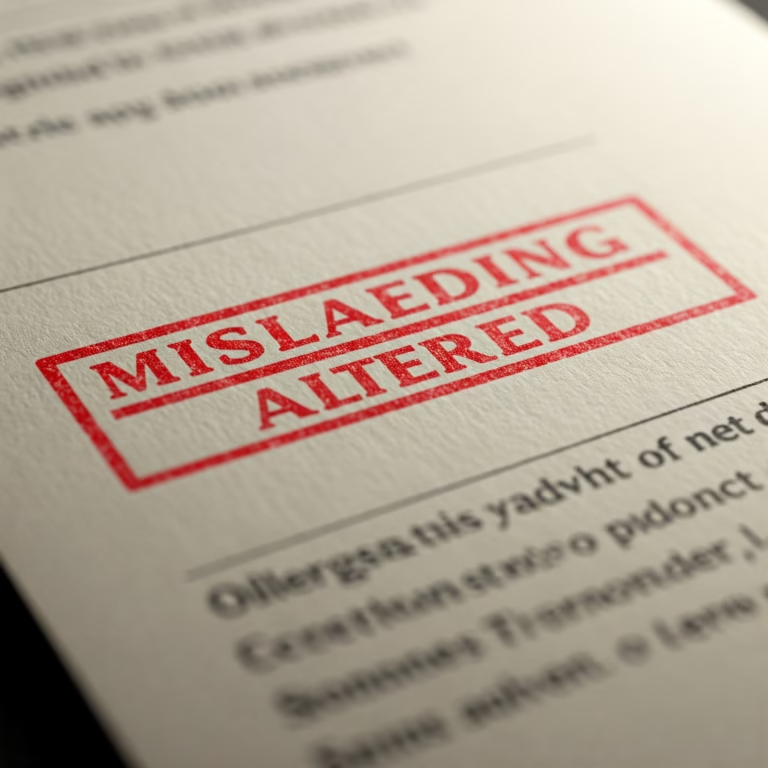
Postcolonial Translation Theory looks at how translation works in colonial and postcolonial power systems. In the past, translation helped shape colonial ideas, influenced how languages interacted, and affected the voices of marginalized groups. While colonial rulers used translation to control, postcolonial scholars and writers have used it to resist and form their own identities.
This article explains the main ideas of Postcolonial Translation Theory, focusing on how translation connects to power, control, cultural mixing, and language identity.
The Role of Translation in Colonialism
Translation was crucial in establishing and maintaining colonial rule. European powers used it to control local knowledge, change legal and administrative systems, and impose their culture on colonized societies.
- Colonial leaders used translation to govern, often mistranslating or twisting native texts to fit colonial ideas.
- Missionaries translated religious texts into local languages, often replacing native spiritual beliefs.
- Translating local literature into European languages often removed cultural meanings, strengthening the dominance of colonial languages.
- Linguistic imperialism shows how powerful languages like English and French pushed aside local languages, leading to their decline or even disappearance.
Language, Power, and Hegemony in Translation
Translation is deeply embedded in structures of power, reinforcing linguistic hierarchy and cultural dominance. Postcolonial scholars argue that translation is not a neutral process—it often reflects the hegemonic influence of colonial languages over native tongues.
- Cultural hegemony in translation refers to the dominance of colonial languages and worldviews in translated texts.
- Linguistic hierarchy results in the marginalization of indigenous languages, often portraying them as “inferior” or “unsophisticated.”
- Untranslatability becomes a political issue when colonized languages lack direct equivalents for colonial concepts, forcing native speakers to conform to the dominant linguistic structures.
- Colonial language policies prioritized translations into hegemonic languages like English, French, and Spanish while devaluing indigenous oral traditions.
Resistance Through Translation
While translation was historically used as a colonial tool, postcolonial authors and translators have used it as an act of resistance, reclaiming agency and redefining identity.
- Decolonizing translation involves rejecting colonial linguistic norms and embracing indigenous languages and storytelling forms.
- Subaltern voices in translation bring marginalized perspectives to the forefront, challenging dominant narratives.
- Retranslation strategies allow postcolonial scholars to reinterpret colonial texts from a non-Eurocentric perspective.
- Authors like Ngũgĩ wa Thiong’o and Salman Rushdie use multilingualism and code-switching in their writing to challenge linguistic imperialism.
Hybridity and Cultural Identity in Translation
Postcolonial theorist Homi Bhabha introduced the concept of hybridity, which describes the blending of cultures in postcolonial societies. Translation plays a crucial role in creating hybrid identities by merging linguistic and cultural elements.
- Hybrid languages emerge when translated texts incorporate indigenous phrases, idioms, and storytelling techniques.
- Multicultural translation acknowledges the fluid nature of language and avoids rigid, colonial-era linguistic binaries.
- Translanguaging and code-switching challenge the purity of colonial languages by blending native and foreign words.
- Writers like Chinua Achebe and Derek Walcott blend English with indigenous linguistic structures to create unique postcolonial narratives.
The Ethics of Postcolonial Translation
The act of translation raises ethical concerns regarding representation, authorship, and the translator’s agency. Who gets to translate postcolonial literature, and how should they approach it?
- Faithfulness vs. adaptation: Should translations remain loyal to the original text, or should they adapt to new cultural contexts?
- Ethical dilemmas arise when translating indigenous oral traditions, as written language may not fully capture their depth.
- Who has the right to translate? Should postcolonial texts be translated by native speakers, or can outsiders accurately represent them?
- Rewriting history through translation allows postcolonial scholars to reclaim narratives that were previously distorted by colonial translators.
Practical Implications for Translators
Postcolonial Translation Theory is not just an academic concept—it has direct relevance for translators working with texts from formerly colonized regions. Understanding its implications can help translators navigate ethical dilemmas, make informed linguistic choices, and contribute to the fair representation of marginalized voices.
How Can Modern Translators Apply Postcolonial Theory in Their Work?
Translators working with postcolonial texts should recognize that translation is not just about words—it carries historical, cultural, and political weight. Here’s how they can apply postcolonial insights:
- Recognizing Power Dynamics: Be aware of how translation choices reinforce or challenge colonial legacies. For example, does a translation prioritize the colonizer’s perspective over the indigenous one?
- Respecting Linguistic Diversity: Instead of “domesticating” a text to fit dominant linguistic norms, translators can preserve cultural expressions, idioms, and native storytelling forms.
- Decolonizing Terminology: Question and rethink colonial-era terminologies. For instance, should “tribe” be replaced with a term that more accurately represents an indigenous community’s structure?
- Amplifying Subaltern Voices: Translators can use their skills to bring marginalized literature, oral traditions, and histories to global audiences in ways that respect and preserve their authenticity.
Best Practices for Ethically Translating Indigenous or Postcolonial Texts
- Engage with the Community: When possible, consult native speakers, historians, and cultural experts to ensure an accurate and respectful translation.
- Maintain Linguistic and Cultural Nuances: Instead of replacing indigenous words with their closest colonial equivalents, consider keeping key terms in the original language with footnotes or glossaries.
- Challenge Colonial Frameworks: Avoid translations that reinforce colonial stereotypes or erase the complexity of indigenous cultures.
- Use Collaborative Translation Approaches: Work with bilingual speakers from indigenous backgrounds to co-create translations that reflect both linguistic accuracy and cultural authenticity.
- Acknowledge the Translator’s Role: Be transparent about the translator’s influence in shaping meaning—whether through translator’s notes, introductions, or contextual explanations.
Challenges Translators Face When Working with Hybrid Languages or Politically Sensitive Texts
- Navigating Linguistic Hybridity: Postcolonial literature often blends multiple languages, dialects, and registers. Should these multilingual elements be preserved in translation, or should they be adapted for readability?
- Untranslatability and Cultural Concepts: Some indigenous concepts may not have direct equivalents in the target language. How should translators handle this—through explanation, borrowing, or adaptation?
- Censorship and Political Sensitivities: Governments, publishers, or audiences may resist translations that challenge dominant historical narratives. Translators may need to make strategic choices between faithfulness and safety.
- Balancing Readability and Authenticity: How much localization is too much? While some adaptations help readers understand unfamiliar concepts, over-domestication risks erasing cultural specificity.
Translation Strategies for Postcolonial Texts
Translation plays a critical role in how postcolonial texts are disseminated across linguistic and cultural borders. In the context of postcolonial works, translation strategies must go beyond mere linguistic conversion and engage deeply with the cultural, historical, and political dimensions of the source text. Two of the most significant translation strategies in this context are foreignization and domestication, along with more specific approaches such as interlinear translation. Let’s dive into each of these strategies.
Foreignization
Foreignization refers to a translation strategy that retains elements of the original text’s cultural, linguistic, and stylistic features, thereby highlighting its foreignness. In postcolonial texts, foreignization serves as a way to preserve the unique identity of the source text, often emphasizing the cultural and linguistic differences between the colonizer and the colonized. This strategy is particularly valuable for postcolonial works as it resists assimilation into the dominant culture’s norms and values, maintaining the integrity of the indigenous voice and experience.
Advantages of Foreignization in Postcolonial Texts:
- Difficulty for Readers: Foreignizing a text may make it harder for the target audience to engage with it, as they may encounter unfamiliar cultural references, expressions, or even grammatical structures.
- Risk of Exoticism: While foreignization preserves authenticity, it runs the risk of exoticizing the source culture, which can reinforce stereotypes or make the text seem “other.”
Domestication
Domestication, on the other hand, involves adapting the text to the cultural norms, idioms, and expectations of the target language and audience. This strategy is often more reader-friendly and makes the text feel familiar, but it risks losing the original’s cultural nuance and political edge. In the context of postcolonial texts, domestication can erase the very identity and resistance that the text embodies.
Advantages of Domestication in Postcolonial Texts:
- Loss of Cultural Context: Domestication tends to sanitize or smooth over the complexities and cultural richness of the source text, which can undermine the political resistance and cultural critique embedded in postcolonial narratives.
- Colonial Overtones: By aligning the text with the norms of the dominant culture, domestication may inadvertently perpetuate colonial power dynamics, even in the act of translation.
Which Strategy is More Suitable for Postcolonial Texts?
In the context of indigenous or hybrid works, foreignization is generally considered more appropriate, particularly when the aim is to preserve the political and cultural resistance of the text. Indigenous postcolonial works often carry the weight of historical injustice and subjugation, and foreignizing translation can help to preserve the authenticity of these narratives.
However, the choice between foreignization and domestication ultimately depends on the purpose of the translation and the intended audience. If the goal is to challenge colonial narratives and offer an unfiltered view of the postcolonial condition, foreignization is the stronger choice. Conversely, if the target audience is more focused on readability and engagement, domestication might be necessary—but at the risk of diluting the message.
A hybrid approach may also be employed in some cases, combining elements of both strategies. For instance, key cultural references or linguistic features could be foreignized to retain authenticity, while less culturally significant elements could be domesticated to make the text more digestible for the target audience.
Historical Context and Evolution of Postcolonial Translation Theory
The evolution of Postcolonial Translation Theory traces its roots back to colonialism and the dominance of colonial powers in shaping the language, culture, and knowledge of the colonized. The development of this field can be broken down into key phases:
- Colonial Era (15th to mid-20th Century): Translation during this period was largely seen as a tool of imperial expansion. Colonial powers, primarily European, used translation to impose their own languages, cultures, and legal systems on colonized peoples. Translation was a mechanism of control, a way to reshape knowledge and govern indigenous societies, often through distortion or selective translation of local texts to fit colonial narratives.
- Post-WWII and Decolonization (1940s-1970s): Following the end of World War II and the wave of decolonization, there was a shift towards questioning colonial narratives. Scholars began recognizing the importance of translation not just as a tool of oppression but as an instrument of resistance. Writers and intellectuals in newly independent nations sought to reclaim their identities and histories, often through the reinterpretation or retranslation of colonial texts.
- 1980s–1990s: Emergence of Postcolonial Translation Studies: With the rise of postcolonial theory, translation began to be examined through a critical lens. Postcolonial Translation Theory became established as an academic subfield during this period, influenced by the writings of scholars in postcolonial studies, such as Edward Said’s Orientalism (1978). Translation was increasingly viewed as not just a linguistic act, but one embedded in cultural and political dynamics.
- Late 20th Century–Present: Consolidation and Critique: Postcolonial Translation Theory solidified its place within the broader field of translation studies in the late 20th century, with scholars exploring the ethical dilemmas involved in translating texts that challenge colonial power structures. This period also saw the rise of translation activism, where translators were seen not just as linguistic mediators, but as participants in the broader decolonization project.
Influential Scholars:
Several scholars have been pivotal in shaping Postcolonial Translation Theory, each contributing key ideas and frameworks:
- Edward Said: Said’s Orientalism (1978) laid the foundation for postcolonial studies by highlighting how the West constructed a narrative of the East as inferior and exotic. His ideas provided a framework for understanding how translation was historically used to reinforce the binary of the “civilized” West and the “primitive” East. In his later work, Said also discussed how translation can be a tool for resistance, challenging colonial representations.
- Gayatri Spivak: Spivak’s work, especially her famous essay Can the Subaltern Speak? (1988), interrogates the role of language and translation in representing marginalized voices. She critiques how translation can perpetuate the silencing of subalterns (those outside the power structures). Spivak also explores the ethics of translation, advocating for more equitable representation of indigenous languages and cultures.
- Homi K. Bhabha: Bhabha’s concept of “hybridity” in The Location of Culture (1994) has been crucial in postcolonial translation. Hybridity describes the way cultural identities are formed through the mixing of colonizer and colonized languages and practices. Bhabha’s ideas encourage translators to embrace the blending of languages and cultures, which is central to postcolonial narratives.
- Leela Gandhi: Gandhi’s Postcolonial Theory: A Critical Introduction (1998) is another influential text that explores how postcolonial theory and translation studies intersect. She draws attention to the politics of translation and the ways it has been used to either maintain or challenge hegemonic power structures.
- Susan Bassnett & Andre Lefevere: While not directly postcolonial theorists, Bassnett and Lefevere’s work in translation studies in the 1980s and 1990s laid the groundwork for later postcolonial scholarship. Their collaborative work, Translation, History, and Culture (1990), helped frame translation as a form of cultural politics, setting the stage for postcolonial translations to be examined through lenses of power, agency, and identity.
Connection to Postcolonial Studies:
Postcolonial Translation Theory is inherently tied to the broader academic field of Postcolonial Studies, which examines the lasting impacts of colonialism on cultures, identities, and power structures in formerly colonized nations. Key intersections between the two fields include:
- Language as Power: In Postcolonial Studies, language is viewed as a tool of domination. Language hierarchies, where the colonizer’s language is privileged over indigenous tongues, continue to shape postcolonial societies. Postcolonial Translation Theory, therefore, critiques this legacy, emphasizing the need to challenge the linguistic dominance of colonial languages.
- Cultural Identity and Resistance: Just as Postcolonial Studies examines how colonized people resisted cultural assimilation and maintained their identities, Postcolonial Translation Theory looks at how translation can serve as an act of cultural preservation and resistance. Translating indigenous texts into the colonial language—or back into indigenous languages—can be a means of reclaiming cultural ownership and reasserting identity.
- Theoretical Foundations: Many Postcolonial Translation theorists build on the work of scholars in Postcolonial Studies, such as Frantz Fanon’s analysis of colonial violence and the role of language in mental colonization, or Aimé Césaire’s exploration of decolonization. Translation is seen as a site where the tensions between colonial languages and indigenous expressions can be contested and renegotiated.
- Historical Reclamation: Both Postcolonial Translation Theory and Postcolonial Studies emphasize the need to reframe history, reclaim narratives, and give voice to those who have been historically marginalized. Through translation, postcolonial authors and translators seek to “rewrite” history, counteracting the distortions imposed by colonial powers.



